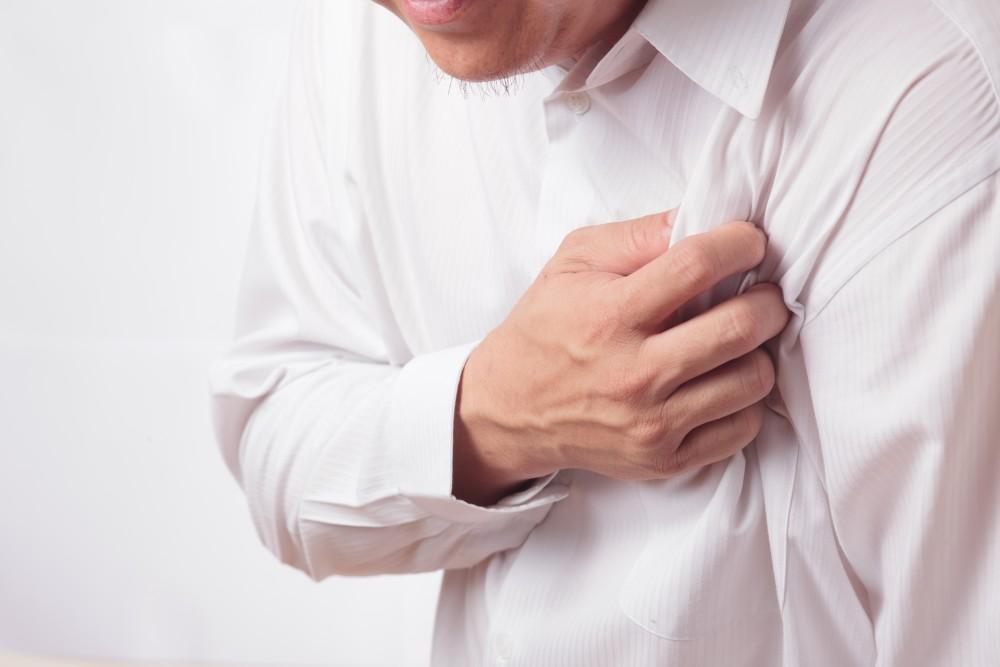Heart Attack: Symptoms, Causes, Treatment
What are the symptoms of a heart attack?
The symptoms of a heart attack can vary from person to person, and they may not always be sudden or severe. Some common symptoms include:
- Chest pain or discomfort: This is the most common symptom. It may feel like pressure, fullness, squeezing, or pain in the center of the chest. The sensation can last for a few minutes or come and go.
- Upper body discomfort: Pain or discomfort may also be felt in one or both arms, the back, neck, jaw, or stomach.
- Shortness of breath: You may feel short of breath or have difficulty breathing, which can occur with or without chest discomfort.
- Other symptoms: Other possible symptoms include nausea, lightheadedness, cold sweats, or breaking out in a cold sweat.
It’s important to note that not everyone experiences all of these symptoms. Some people, especially women, may have more subtle symptoms or symptoms unrelated to chest pain, such as fatigue, indigestion, or anxiety.
If you or someone you know experiences symptoms that could be a heart attack, it’s crucial to seek immediate medical attention. Prompt treatment can help minimize damage to the heart muscle and improve outcomes.
What are the causes of a heart attack?
A heart attack, also known as a myocardial infarction, occurs when the blood flow to a part of the heart is blocked for a long enough time that part of the heart muscle is damaged or dies. The most common cause of this blockage is the buildup of plaque (a combination of fat, cholesterol, and other substances) in the arteries that supply blood to the heart (coronary arteries). This buildup of plaque is known as atherosclerosis. When a plaque ruptures, a blood clot can form and block the artery, leading to a heart attack.
Several factors can increase the risk of developing atherosclerosis and having a heart attack. These risk factors include:
- Unhealthy diet: A diet high in saturated fats, trans fats, cholesterol, and sodium can increase the risk of atherosclerosis and heart disease.
- Lack of physical activity: Being physically inactive can lead to obesity and other conditions that increase the risk of heart disease.
- Smoking: Smoking damages blood vessels, lowers good cholesterol (HDL), and raises blood pressure, all of which increase the risk of heart disease.
- High blood pressure: High blood pressure can damage arteries over time, making them more susceptible to plaque buildup and rupture.
- High cholesterol: High levels of LDL cholesterol (the “bad” cholesterol) can lead to plaque buildup in the arteries.
- Diabetes: Diabetes increases the risk of heart disease, in part due to the higher likelihood of having other risk factors like high blood pressure and high cholesterol.
- Obesity: Excess weight, especially around the abdomen, can increase the risk of heart disease.
- Family history: Having a close relative with heart disease increases your risk.
- Age: The risk of heart disease increases with age.
- Gender: Men are generally at higher risk of heart disease, though the risk for women increases after menopause.
- Stress: Chronic stress can contribute to heart disease through its effects on behavior, such as smoking or overeating.
Managing these risk factors through lifestyle changes (such as a healthy diet, regular exercise, and quitting smoking) and, if necessary, medication prescribed by a healthcare provider, can help reduce the risk of heart attacks and other cardiovascular problems.
What is the treatment for a heart attack?
The treatment for a heart attack aims to restore blood flow to the affected part of the heart as quickly as possible to prevent or minimize damage to the heart muscle. The treatment can vary depending on the severity of the heart attack and the individual’s overall health. However, common treatments include:
- Medications:
- Aspirin: Often given as soon as a heart attack is suspected to help prevent further blood clotting.
- Thrombolytics (clot-busting drugs): Given to dissolve the blood clot causing the heart attack if it’s caught early.
- Antiplatelet drugs: Such as clopidogrel (Plavix) to prevent further blood clotting.
- Pain relievers: Such as nitroglycerin to relieve chest pain or discomfort.
- Beta-blockers: To help improve heart function and reduce the workload on the heart.
- ACE inhibitors or ARBs: To help reduce strain on the heart and improve blood flow.
- Oxygen therapy: Supplemental oxygen may be given to increase the amount of oxygen in the blood and reduce the workload on the heart.
- Cardiac procedures:
- Coronary angioplasty and stenting: A procedure to open blocked or narrowed coronary arteries and place a stent to keep the artery open.
- Coronary artery bypass surgery (CABG): In some cases, bypass surgery may be needed to reroute blood flow around a blocked artery.
- Cardiac rehabilitation: After a heart attack, participating in a cardiac rehabilitation program can help improve your overall heart health through exercise, education, and counseling.
- Lifestyle changes: Making lifestyle changes such as adopting a heart-healthy diet, quitting smoking, maintaining a healthy weight, and exercising regularly can help reduce the risk of future heart problems.
It’s important to seek immediate medical attention if you or someone else is experiencing symptoms of a heart attack. Early treatment can help minimize damage to the heart and improve outcomes.




